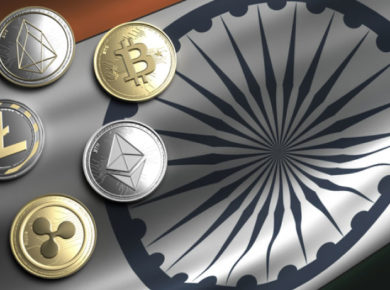This metric should measure the size of the levered market. It can be misleading because it is inflated with a leverage multiplier, carries high sensitivity to price, and is far from holistic, the analysts at the firm stated.
They claim that it is difficult to measure the DeFi theme’s adoption due to the wide range of DeFi applications. This is why TVL has “converged” the industry.
This metric should measure the size of the levered market. It can be misleading because it is inflated with a leverage multiplier, carries high sensitivity to price, and is far from holistic,” analysts at the firm stated.
They claim that it is difficult to measure the DeFi theme’s adoption due to the wide range of DeFi applications. This is why TVL has “converged” the industry.
TVL for any protocol refers to the sum dollar value of all collateral deposited into that particular decentralized application. It can then be compared with any other dapp (decentralized app), regardless of their functionalities.
DeFi Pulse at 11:27 UTC shows that the TVL is currently USD 66.55bn. However, according to Defi Luma, it’s US$ 111bn and DappRadar, it’s US USD 98bn.
Coin Metrics identified three obstacles to computing a solid TVL metric in each case.
1. The myth of “total”
“Total” refers to tracking all versions of a protocol on multiple chains ( ETH (ETH)), Binance Smart ( BSC), and second layers such as Polygon or Fantom.
Protocol clones are so common that it is almost impossible to track all collateral assigned to a blockchain in real time. Coin Metrics, an observer, has to choose which protocols to track TVL for. Providers must constantly evaluate past measurements in order to accurately calculate TVL for platforms like Ethereum.
They stated that “the frequency of new protocol launches leads us to a natural underestimation the total value used in collateral across all DeFi apps by all data providers.”
A complicating factor is the possibility of protocols becoming obsolete. Therefore, it is important to monitor and update existing versions as well as contract deployments.
2. The myth of value
Value is the ability to determine a fair price for any asset that can be used in collateral. DeFi protocols allow you to support an almost infinite number of such assets. Analysts stated that the complexity of the collateral types makes it difficult to value estimate.
All these assets can also be traded across multiple venues including central, off-chain and on-chain. It is “a difficult task” to collect pricing data from all venues. However, it is necessary so that collateral assets can be correctly priced via an index value that takes into account each venue.
The problem is further complicated by the fact that even if a data provider had the bandwidth to produce index value from every trading venue, it is difficult to take all data at face value. DeFi liquidity pool pricing data can be altered, which can lead to inaccurate value measurements.
3.The myth of the ‘locked’
Coin Metrics says “Locked” is a misleading term, since most protocols liquidity can easily be added or taken out. To avoid double counting or triple counting, it involves untangling all the assets.
One could assume that each unit of collateral deposited as collateral is being used only within the protocol – that assets are ‘locked’ and being strictly used in the context the application. According to the firm, “However DeFi money markets work, this assumption is incorrect.”
DeFi allows the creation of asset derivatives that can rehypothecate collateral. This means that collateral used in one application may be used in another.
According to Coin Metrics, “In short, some assets used in DeFI applications as collateral are derivatives that represent claims on other collateral.” This creates a multiplier factor which can dramatically increase TVL estimates, since both real and hypothecated collateral are counted.
Many in the crypto industry have questioned the validity of reporting. Cryptonews.com industry figures agree that double-counts could lead to inaccurate TVL data. They warned that TVL has increased largely due to yield farming activities, which could pose a risk to the system.
Other problems include double counting, counting in synthetic or governance tokens that are used as collateral for another cryptoasset, and TVL rising simply because crypto prices have risen relative to the USD.











